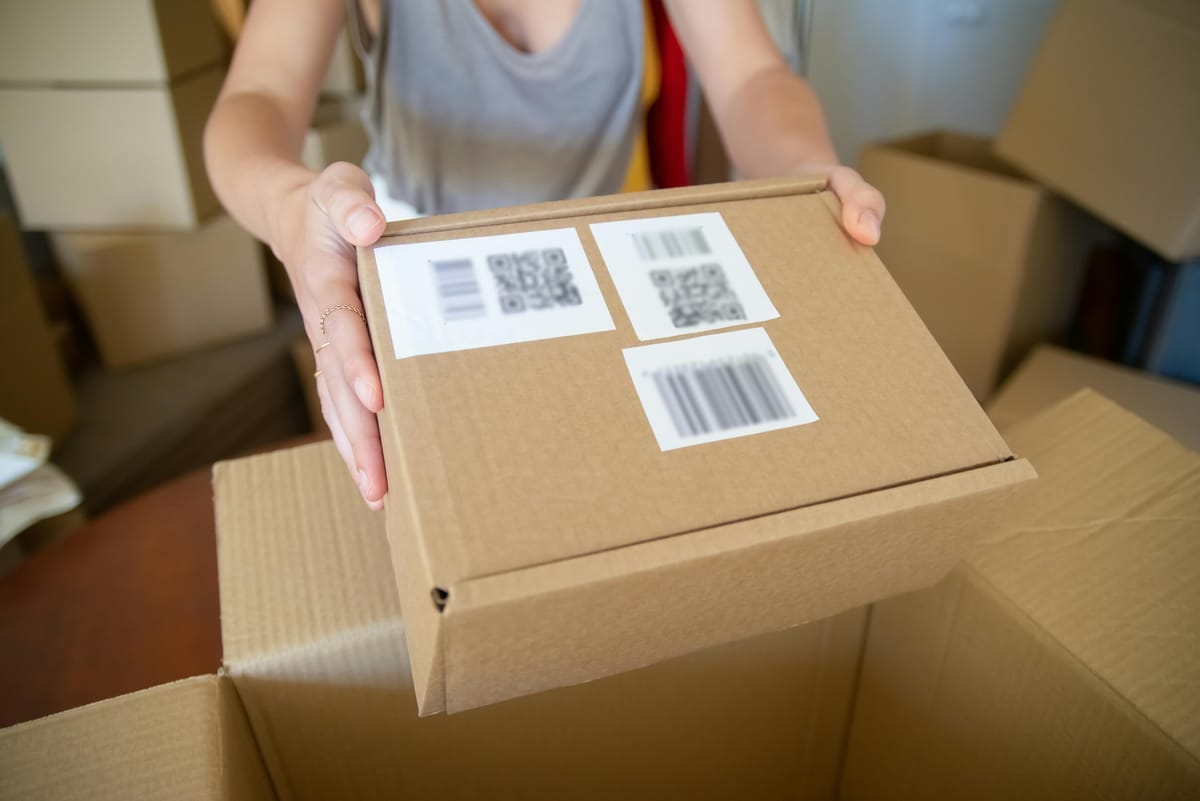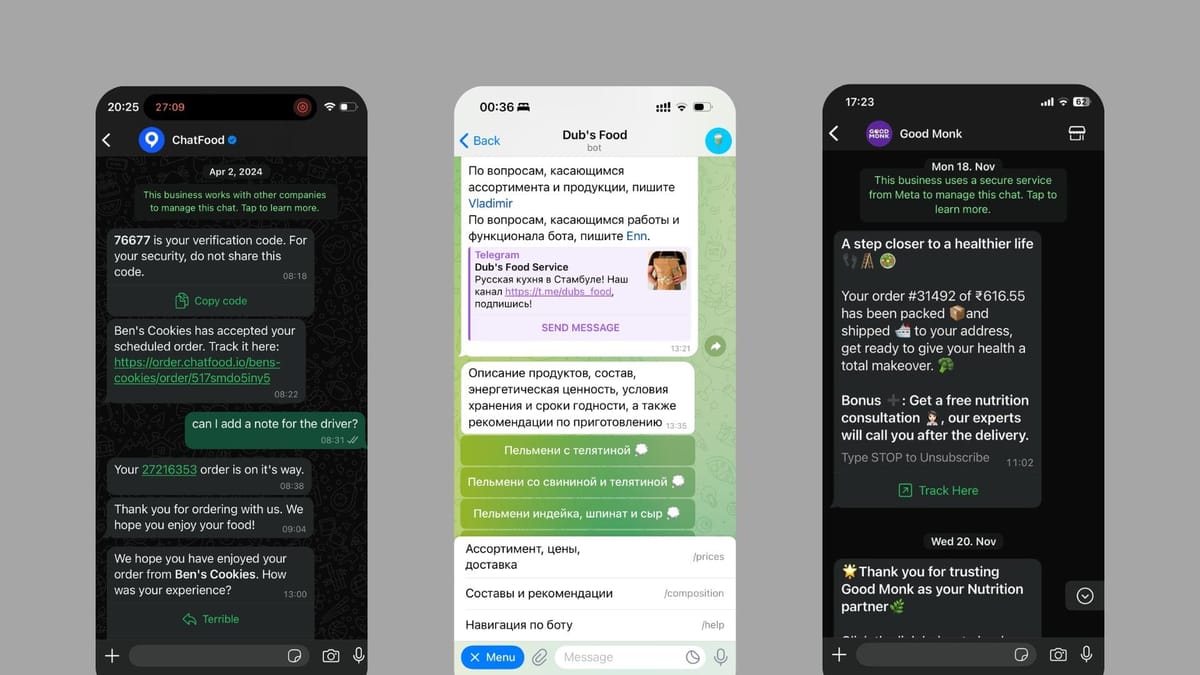How Much Does it Cost to Start an E-Commerce Business in 2025?
What’s the initial investment amount you really need to start a small e-commerce business in 2025? Let’s dive into the costs and see if it's the right path for you.

We mostly see the names of large companies like X, Amazon, Microsoft, or Google flashing in the headlines. However, let’s not forget that a whopping 40% of value added nationally is produced by small and medium-sized businesses. Looking at these numbers, one might think that starting their own shop is a viable option to achieve financial freedom.
E-commerce, or selling goods through the internet, has many advantages over other entrepreneurial paths. An online store offers its owner unparalleled freedom—allowing them to choose where they live and when they work. This level of flexibility is becoming increasingly rare even for workers in IT, as major corporations continue to enforce return-to-office policies.
But how much does it cost to start your own online shop in 2025?
According to Statista, the three most challenging aspects of starting a small e-commerce store include:
- establishing an online presence,
- efficiently managing supply chain logistics,
- and building and engaging with an audience.
Assuming you already have an idea of what you want to sell, let's break down these three key areas into smaller components and roughly estimate the amount of money needed. We'll explore the services available in the market for each business process and analyze their associated costs.
We also won’t speak about the costs of establishing a business entity and about taxes, as this requires expert advice.
Part 1: Establishing an Online Presence
Having an online storefront is essential to launching your e-commerce business. The concept is simple: Make a web page that allows potential customers to explore your products and place orders.
In 2025, with countless platforms available—many of which require no coding or design skills—creating such a web page has never been easier. Estimates suggest that over 250,000 websites are launched every day, and undoubtedly, not all of them are built by professional web designers.
However, with so many options at their disposal, entrepreneurs without prior experience may find the sheer variety overwhelming. Let's take a closer look at some of the most straightforward solutions and their costs.
Where to Sell?
Option A. On standalone online storefronts.
These can be in the form of:
- Custom websites (e.g., WordPress + WooCommerce plug-in)
- E-commerce platforms (e.g., Shopify, BigCommerce, Wix, Squarespace)
Costs: Shopify, the household name in e-commerce website development, has its cheapest* plan at $1 per month for the first three months. After that, the cost is $39 per month if you’re not ready to commit to the annual subscription, or $29 per month if you’re more decisive. Which brings us to at least $120 in the first six months. This figure doesn’t include per-transaction payment gateway fees.
*Shopify also has a “Starter” plan which we will discuss below.
Option B. On social media storefronts.
Instagram Shop, Facebook Shops, TikTok Shop, Pinterest Shopping, and WhatsApp Business Catalog allow you to create a storefront directly within social media platforms.
Another option is Shopify Starter, a solution that allows you to create a simple storefront and start accepting payments for just $5 per month. Unlike other Shopify plans, this one is best suitable for entrepreneurs who drive sales through socials. The website structure itself is very simple, and doesn’t allow for any additional sections apart from a storefront and payments. But if you’re looking to simplify purchases for top-of-the-funnel, loyal audiences from socials, this can be the right fit.
Costs: If you establish a store with a checkout through Facebook’s Commerce Manager, Meta charges you a processing fee of 2.9% or 3.94% per transaction depending on your customer’s payment option.
We’re looking at roughly $3-4 for every $100 sold.
Shopify Starter subscription costs $5 per month, with a considerable $5 per-transaction payment processing fee.

Option C. On marketplace storefronts.
Amazon, eBay, Etsy, and Walmart Marketplace are set up for you to start your online store within their ecosystem. The customer’s journey is controlled by the platforms, but if you optimize your listings for search, you may take advantage of the algorithms and secure sales.
Costs: On Amazon, you can choose between a flat fee of $39.99/month with the Professional plan or a $0.99 fee for each item sold with the Individual plan. However, Amazon also takes a commission on each sale, called a referral fee, which varies by product category. Let’s assume a 15% referral fee, as it applies to a wide range of categories such as home and kitchen, toys, beauty, and clothing (over $20).
Roughly, when selling on Amazon, one should assume fixed costs of $40 monthly, and a referral fee of approximately 15% per item.
Option D: Through chatbots.
Chatbots provide a unique way to sell products directly through messaging apps such as Messenger, WhatsApp, and Telegram. These automated tools guide customers through the buying process, answering inquiries, recommending products, and facilitating transactions—all within the chat interface. This approach is particularly useful for businesses targeting mobile-first audiences or those seeking a more interactive and conversational shopping experience.
Many chatbot platforms offer free basic plans with limited features, and if you really want to save money, you can find everything that you need in the free versions. Advanced automation and integrations come with paid plans.
For example:
- ManyChat (popular for Facebook and Instagram): Offers a free plan, while paid plans start at $15 per month for additional automation and integrations.
- Chatfuel (another leading chatbot builder): Provides a free version, with premium plans starting at $15 per month.
Costs: If you're looking at a chatbot-based storefront, you might be spending from $0 to $50 per month, depending on the platform and the number of interactions you handle.

How to Handle Payments?
Once your online store is set up, the next crucial step is enabling a smooth and secure payment process.
Option A: Through “traditional” payment gateways.
Payment gateways are third-party services that process online transactions securely. They act as intermediaries between your store and the customer’s bank, ensuring safe and quick transactions. Popular payment gateways include:
- Stripe: Charges 2.9% + $0.30 per transaction in the U.S.
- PayPal: Typically charges 2.99% + a fixed fee based on the currency.
- Square: Charges 2.9% + $0.30 per transaction for online payments.
Costs: Expect to pay from 2.9% to 3.5% per transaction.
Option B: In the app where you sell.
If you're selling through platforms like Facebook Shops, Instagram Shop, or marketplaces like Amazon, payment fees will normally be included into their per-sale fees. So you end up not paying any additional fees.
Option C: With Buy Now, Pay Later (BNPL) services.
Offering BNPL options such as Klarna, Afterpay, or Affirm can attract more customers by allowing them to split payments into installments. These services typically charge a higher commission (around 4% to 6%) but can help boost sales and attract budget-conscious buyers.
BNPL is generally used as a secondary payment method rather than a primary one, complementing traditional gateways to offer more flexibility to customers.
Part 2: Managing Item Fulfillment and Delivery
Needless to say it’s important to set up proper inventory control, especially as the number of orders grows. Inventory management ensures that products are available when customers need them, and helps avoid overstocking.
How to Manage Inventory?
Option A: Using inventory management software.
For small e-commerce entrepreneurs and businesses, efficient inventory management is crucial to avoid stockouts, overstocking, and order fulfillment delays. BoxHero simplifies this process with an intuitive, cloud-based inventory management system.
One of BoxHero’s greatest advantages is its ease of use—you don’t need prior experience with inventory software to get started.
The platform offers automated stock updates: Use your phone camera to scan barcodes on your items, and stock them in or out of your warehouse database in a second. No more manual Excel updates.
If you manage to grow the shop, we have your back with multi-user and multi-location support.
With mobile accessibility, you can monitor inventory levels from anywhere, ensuring your store remains operational at all times.
BoxHero is perfectly suited for e-commerce businesses that are just starting out thanks to its lightweight interface, and a straightforward setup process.
Costs: Using BoxHero is free if your inventory is under 100 items, and you’re the only one on the team. For inventories over 100 items and additional staff members, the cost is $20 per month, or $216 per year, which includes a 10% discount for choosing the annual subscription.
Option B: By outsourcing inventory management.
Outsourcing to services like Fulfillment by Amazon (FBA), or 3PL (third-party logistics) providers can offload storage, packing, and shipping.
Costs: Amazon charges FBA sellers fulfillment costs per unit sold, inventory storage costs, fees for aged inventory, returns, and inventory disposal.
Let’s assume a lucky scenario where you don’t hold inventory for too long, your sold items are never returned, and you sell everything so that no disposal is needed. Let’s also assume that you sell unisex cotton T-shirts with a custom print, likely falling into the Small Standard Apparel FBA category.
In this case, you end up paying from $3.27 to $3.72 per T-shirt sold, or at least $327 for every 100 T-shirts in fulfillment fees. Additionally, storing 100 T-shirts in Amazon’s fulfillment centers would cost approximately $5.18/month for most of the year. During the holiday season (October - December), storage costs triple.
How to Handle Shipping?
There are two main approaches to handling shipping: managing it yourself or outsourcing to 3PL providers.
Option A: Self-fulfillment.
If you choose to ship products on your own, you'll need to manage packaging, carrier selection, and shipping costs.
Key considerations:
- Carriers to choose from: USPS, FedEx, UPS, DHL (each offer different pricing and delivery speeds).
- Shipping costs: Depend on weight, dimensions, destination, and speed (e.g., standard, expedited).
- Packaging materials: You will need boxes, bubble wrap, poly bags, and branded packaging.
Costs: Shipping fees can range from $3 to $10 per order domestically, with international shipping being significantly more expensive.
Option B: Third-party fulfillment services.
Third-party fulfillment providers like Fulfillment by Amazon (FBA), ShipBob, and Deliverr store your inventory, pack orders, and ship them to customers.
Key considerations:
- Storage fees: Monthly charges based on inventory volume.
- Fulfillment fees: Charged per unit shipped, based on size and weight.
- Returns management: Handled by the provider, often at an additional cost.
Costs: Amazon FBA charges around $3 to $8 per item for fulfillment, plus storage fees of approximately $0.87 per cubic foot.
For entrepreneurs looking to minimize the complexities of managing physical inventory, there are several inventory-free business models available. Read our article to explore options like dropshipping and print-on-demand.
Part 3: Attracting and Engaging Your Audience
Without a steady flow of potential customers, even the best products and the most well-designed storefront won’t generate sales.
If you don’t have an audience yet, one of the easiest ways to start is by participating in local events such as fairs, pop-up markets, and community gatherings. These opportunities allow you to connect with potential customers in person, introduce your brand, and even make your first sales.
In the digital space, developing a strong social media presence is one of the most effective ways to build your audience. Consistently creating engaging content—such as product demos, tutorials, or customer testimonials—can help grow your brand organically.
Costs: Building an audience, whether online or offline, will mostly cost you your own time only. When just starting out, you don’t need to hire extra employees, purchase special software, or invest in ads; there are plenty of ways to get some attention through organic activities and with free tools. While paid advertising can accelerate growth, efforts such as networking, content creation, and social engagement pay off better in the long run.
Cost of Starting an E-Commerce Business: Example Calculation
Let’s consider a hypothetical scenario that pulls together the main cost elements of running an e-commerce business. Imagine a stay-at-home mom (we’ll call her Sarah) who has cotton T-shirts with her custom print manufactured and wants to sell them online. We’ll focus on the associated e-commerce costs—that is, establishing her online store, managing inventory, and facilitating sales.
Sarah’s E-Commerce Stack
Sarah chooses the Basic Shopify plan at $39/month (billed monthly). She allows her users to pay through Shopify Payments or the third-party gateway Stripe. Sarah ships orders herself using standard carriers (e.g., USPS, UPS). Assume $4 average shipping cost per T-shirt. We’ll assume zero ad spend or “organic-only” marketing to keep things simple.
Let’s break down e–commerce costs into two brackets: Fixed Costs and Variable Costs.
Fixed Costs
These are costs that recur every month, regardless of whether Sarah sells one T-shirt or 100 T-shirts.
- Shopify Subscription: $39/month.
- BoxHero Subscription: $20/month (for managing more than 100 items in inventory).
Variable Costs
These costs depend on sales volume—specifically how many T-shirts are sold. Sarah plans to sell 100 T-shirts a month, each priced at $30. This will bring her $3,000 in monthly revenue.
To fulfill 100 orders to her customers, she will incur the following costs:
▶︎ Payment Processing Costs
2.9% + $0.30 per transaction.
- 2.9% of $3,000 = $87
- $0.30 per transaction x 100 transactions = $30
- Total payment processing costs = $87 + $30 = $117/month
▶︎ Shipping Costs
$4 per T-shirt for shipping.
- 100 x $4 = $400/month
- Total shipping costs = $400/month.
Variable and Fixed Costs
Once again: every month, Sarah pays $59 regardless of how much she sold. Moreover, if she sells, say, 100 T-shirts, she pays $517 to fulfill the orders.
In a month in which Sarah sells 100 T-shirts, here’s what her economics would look like:
- Gross revenue: $3,000
- E-commerce costs: $576
- Remaining: $3,000 - $576 = $2,424
In other words, with this e-commerce stack, if Sarah manages to bring in 100 customers, she earns $2,424. This $2,424 does not account for the original cost to manufacture the T-shirts, any ongoing marketing/advertising costs, returns, refunds, or additional packaging materials.
If Sarah created the T-shirts for fun and the manufacturing costs were minimal, and if she relies on a loyal social following built organically, the key costs would be shipping and handling potential returns.
This calculation gives a lot of food for thought:
- The most money at this sales volume is spent at shipping and in case of returns. Sarah should search for solutions that make shipping cheaper, or help reduce returns.
- Depending on the relationship with her audience, Sarah might decide to charge the customer for payment processing or shipping to increase her margin.
Conclusion
Starting a small e-commerce business in 2025 can be both affordable and flexible thanks to the well-developed e-commerce tools such as BoxHero, the inventory management solution, or Shopify.
First, think how to build your audience—organic social media promotion can bring amazing results in 2025.
Then, select a straightforward way to establish your online presence—options range from e-commerce platforms to free chatbots.
Finally, decide whether you’ll handle order fulfillment yourself or outsource to third-party providers, carefully factoring in shipping and packaging expenses and any storage or transaction fees.
Considering launching your e-commerce? Stay tuned for more tips in our blog!



